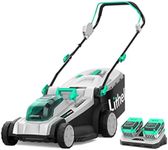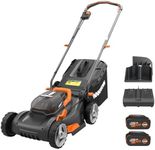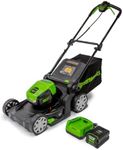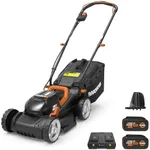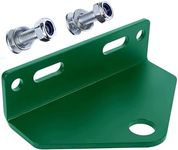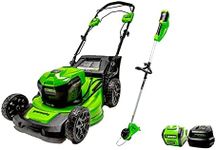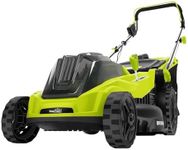Buying Guide for the Best Cheap Lawn Mowers
Choosing the right lawn mower can make yard work much easier and more enjoyable. The best mower for you depends on the size of your lawn, the type of grass, and how much effort you want to put into mowing. It's important to understand the main features and specifications so you can pick a mower that fits your needs and makes lawn care efficient and comfortable.Power SourceThe power source refers to how the lawn mower is powered—either by gas, electricity (corded or battery), or manual push. Gas mowers are generally more powerful and suitable for larger or tougher lawns, but they require more maintenance and can be noisy. Electric mowers are quieter and easier to maintain, with corded models offering unlimited run time as long as you have an outlet nearby, while battery-powered models offer more freedom of movement but are limited by battery life. Manual push mowers are eco-friendly and quiet, but require more physical effort and are best for small, flat lawns. Consider your lawn size, terrain, and how much effort you want to put in when choosing the power source.
Cutting WidthCutting width is the width of the area the mower can cut in a single pass. Wider cutting widths mean you can mow your lawn faster, as you cover more ground with each pass. Typical cutting widths range from about 14 inches for small, compact mowers to over 20 inches for larger models. If you have a small or narrow yard, a smaller cutting width can help you maneuver more easily. For larger, open lawns, a wider cutting width can save you time.
Cutting Height AdjustmentCutting height adjustment allows you to change how short or tall the grass is cut. This is important because different types of grass and seasons may require different mowing heights for healthy growth. Most mowers offer several height settings, usually adjusted by levers or knobs. If you want flexibility to maintain your lawn at different lengths, look for a mower with easy and multiple height adjustments.
Grass Clipping ManagementGrass clipping management refers to how the mower handles the grass it cuts. The main options are bagging (collecting clippings in a bag), mulching (chopping clippings finely and returning them to the lawn), or side discharge (ejecting clippings to the side). Bagging keeps your lawn tidy but requires emptying the bag. Mulching helps fertilize your lawn naturally. Side discharge is simple but can leave clippings on the lawn. Think about how you want to deal with clippings and choose a mower that offers your preferred option.
Weight and ManeuverabilityWeight and maneuverability affect how easy the mower is to push and turn, especially around obstacles like trees or flower beds. Lighter mowers are easier to handle, making them a good choice for smaller yards or users who prefer less physical effort. Heavier mowers may be more stable on uneven ground but can be harder to push. Consider your own strength and the layout of your yard when thinking about this feature.
Start MechanismThe start mechanism is how you get the mower running. Some mowers use a pull cord, which can require a bit of strength and effort, while others have push-button or key start systems that are much easier to use. If you have difficulty with pull cords or want a more convenient start, look for a mower with an easy-start feature.


